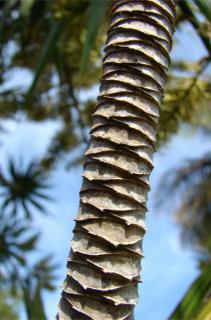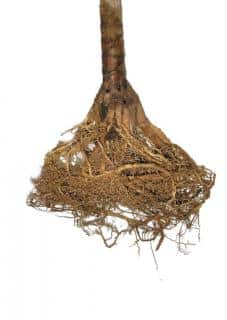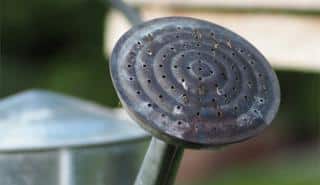

Dracaena marginata is an indoor plant that owes its ease of care to survival mechanisms that developed over eons. Drought and irregular rain cycles tweaked the plant’s natural structure and turned it into a plant that can cope with extremely irregular rainfall.
This makes it perfect for absent-minded owners who occasionally forget to water the sturdy dragon plant!
However, scientists report that changing climate patterns might test the dragon tree’s capacity to survive in the wild.
Plants have several tricks up their sleeve to cope with water stress. Dracaena marginata is no exception, and it has perfected a few strategies to ensure it can survive when available water disappears. It shares these with all plants of the Dracaena genus.

A second surprising characteristic of Dracaena marginata stems is the very high water-pulling capacity. Water found below in the root system is drawn up through the stem like a powerful vacuum. This is called “hydraulic capacitance“. It’s caused by a special breed of starchy carbohydrates that bind to water intimately and pull it up out of the ground.
Together with the amazing root system, the stem literally sucks the water out of the ground, vacuuming up every single available droplet. Roots and stems of the dragon plant can hold water on a basis almost equivalent to that of the famed baobab tree! (Water per weight of plant matter).

When rain falls and flash floods occur, the combination of roots and water-absorbing stems means that the Dracaena marginata plant is able to replenish water reserves in a very short time.
That’s why the dracaena marginata is capable of surviving droughts and dry spells. Indeed, it can suck water up in tremendous amounts as soon as it is available, and can hold on to it without loosing much in hot weather.
Madagascar and Mauritius are witnessing changes in weather patterns, more specifically as regards rain and precipitation.
Some areas receive less water than ever before, leading to a first signs of desertification. The land is more arid and dry. Precipitations are fewer and farther between, even as mean temperatures rise. For example, in southern Madagascar, temperatures have risen by 1.6 °C in the cooler season, and by 2.6 °C in the warmest season (3°F and 5°F respectively).
Total amounts of water decrease, and tend to concentrate on fewer days. This means flash floods are more likely than they were in the past, and most of the water is lost to runoff instead of seeping into the soil.
From an agricultural point of view, weather patterns are more erratic and unpredictable. This means crops and cultures are lost to flooding or drought. As a result, foraging increases to compensate lost crops and new fields put pressure on previously pristine habitats.
All this seems to hint that in their own native environment, some plants like Dracaena marginata might have to be surveyed and protected against habitat loss. Precautions must taken to keep them from being wiped out. Even massive wild Dracaena marginata are at risk of disappearing. Indeed, although evolution has gifted them with the strong coping mechanisms described above, they might not suffice given the magnitude of these changes.
If you want to maximize the growth of your Dracaena marginata, you should water at the most every 6 to 7 days. This is the time it takes for the plant to exhaust most of the water reserves it has acquired during the previous watering.
If you wait more than 6 days, the plant starts triggering water stress mechanisms. The dragon plant stops its daily growth spurts and starts shutting down leaf production. Towards the end of these seven days, root growth is privileged. New nooks and crannies in the soil are explored by the growing roots.

The plant does suffer from the lack of water, though. It needs several weeks of regular watering to recover normal growing activity. But this behind-the-scene process goes mostly unnoticed by many of us, which makes Dracaena marginata an ideal companion for the office or for the busy household!
All in all, a very sturdy houseplant that will easily cope with the artificial drought that hectic days at work and at home can produce!
Watering again before the soil has dried out entirely puts the plant at risk of developping yellow dracaena leaves. This is a sign of overwatering and must be dealt with swiftly.
Read also:
The extensive root system must absolutely be kept out of water, or your Dracaena marginata would quickly develop root rot.
Ensure that the pot has a drainage hole and doesn’t rest in sitting water.
Sources shared to Nature & Garden:
Evolution of Madagascar climate
Dracaena marginata in drought conditions